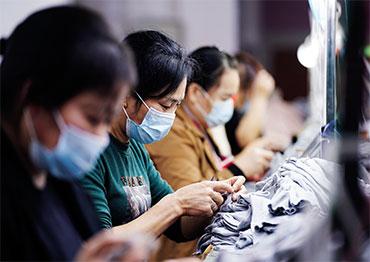The meeting directly addressed five major issues that have raised concerns in China. The first is how to achieve common prosperity, a keynote concept underlining the doctrine of socialism with Chinese characteristics, which was reemphasized by Chinese President Xi Jinping in 2021. The meeting stressed that achieving common prosperity is a long-term process, and the country must first make the “cake” bigger and better and then divide it through institutional arrangements.
Regarding distribution, the meeting stressed that distribution “according to work” will remain the mainstay, while distribution via taxation, social security and transfer payment will be increased. It indicates that at least in the near future, China’s common prosperity agenda will still focus on promoting economic development and employment. Distribution through charities and donations from willing individuals and enterprises will also receive support.
The second issue is the authorities’ crackdown on “excessive capital expansion” launched in 2021, especially in the internet sector and the tutoring industry. The meeting called for correctly understanding the “profit-driven” nature of capital, which can play an active role in the distribution of resources, but can also have negative effects without effective supervision. The meeting reiterated that authorities will establish “traffic lights” for capital to strengthen supervision in accordance with the law.
Regarding the relationship between the State-owned and private sectors, the meeting said the Party will “unswervingly consolidate and develop State-owned enterprises, and unswervingly encourage, support, and guide the economic development of non-State-owned enterprises.”
Thirdly, the meeting highlighted ensuring “the supply of primary products.” In the past months, the disruption of the global supply chain and the resulting spike in commodity prices on the international market have had a major impact on China’s economy. As China relies heavily on imports of raw materials and some key components for production, the meeting called for the implementation of a conservation strategy. It refers to both saving and recycling resources. In the meantime, domestic supplies must be guaranteed and improved, particularly the supplies of petroleum, natural gas and food.
Risk prevention and problem solving were also stressed at the meeting, apparently referring to the financial crises sparked by real estate giants like Evergrande. In 2021, the Chinese government tightened regulations over the real estate sector. As the US Federal Reserve is tightening the monetary policy and may increase benchmark interest rates soon, it appears that more firms, especially those mired in dollar debt, will struggle.
The meeting stressed that China will handle the risk to ensure systemic financial stability by “strengthening coordination and implementing differentiated policies while defusing bombs in a targeted manner.” It also highlights that companies in trouble must do all they can to save themselves.
Finally, the meeting addressed China’s approach to fulfilling its pledges to peak carbon by 2030 and achieve carbon neutrality by 2060. During the autumn of 2021, China experienced widespread power outages across the country, which led to disruptions in residential use and industrial production.
The meeting warned against the “campaign-style carbon reduction” conducted by some local governments, stressing that the phasing out of traditional energies can only be conducted when there are secure and reliable new energy sources.
To encourage the development of new energy, the meeting said that renewable energy will not be constrained by the cap imposed on the country’s total energy consumption. It also said that China will strive to transform its “dual control” policy from controlling energy intensity and total energy consumption to controlling energy intensity and total carbon emission.
By clarifying the leadership’s policy stances, the meeting aims to build consensus, boost confidence and stabilize policy expectations amid multiple external and domestic challenges.

 Old Version
Old Version